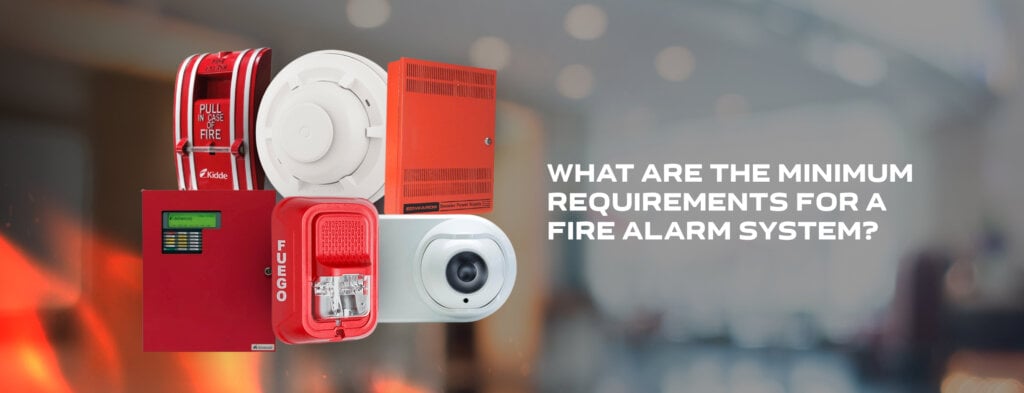
First and foremost, fire alarm systems are primarily designed to protect life and property. When not properly equipped, as many as 60 percent of businesses never recover from a fire. To this end, the scale of your fire alarm system may vary based on your budget and needs. Additionally, your fire protection system may have to meet certain requirements depending on what your local fire codes determine is adequate to protect your building. Accordingly, a properly designed, installed, and maintained system can go a long way towards preventing a potential disaster.
Fire alarm systems are built to detect smoke, carbon monoxide, dangerous gases, or other fire-related emergencies. Afterwards, the system will provide early notification to the building occupants and fire services. Also, in special cases notification systems will not warn the occupants, but inform trained staff members, so they can respond to the fire emergency. Cases like this may occur in hospital or prisons, where occupants are unable to evacuate the premises on their own and may need some sort of special accommodation.

To carry out so many complex tasks, fire alarm systems are comprised of many different devices and processes. The fire alarm control panel acts as the primary control center of the system. It receives inputs from detection devices, and will send a signal to output devices, which can respond to an alarm state. Moreover, the panel may enter a trouble condition, or a supervisory state when certain conditions are met. The trouble condition tells the fire alarm control panel that a wire has been cut or a device is inoperable. Similarly, the panel is sent a supervisory condition when there is an issue with a piece of equipment the control panel is monitoring. For example, a valve supervisory switch may send a signal to the control panel when a valve connected to the sprinkler system has been closed. Of the many different parts and equipment associated with a fire alarm system, the following represents the bare minimum requirement to get started:
Inside the fire alarm control panel are the electronic components responsible for supervising and monitoring the fire alarm system, with direct connections to both the initiating and indicating circuits. A fire alarm panel can be either addressable or conventional, and should have the corresponding devices that are compatible with the panel type.
The alarm initiating device circuit contains fire detection devices, which report directly to the main fire alarm control panel and may activate an alarm state. Once an alarm state has been triggered, fire suppression and notification appliances are activated to respond to the emergency. Devices along this circuit include smoke detectors, heat detectors, flame detectors, gas sensing detectors, manual pull stations, and automatic suppression systems.
The alarm indicating appliance circuits power audio and visual notification devices, which provide a safety warning to building occupants. Occupants who are deaf or hard of hearing may require special devices such as a bed shaker. Building codes may also require a signal to be sent to the local fire department. Typical devices along this circuit include speakers, bells, chimes, horns, strobes, and combination devices.
The primary power supply is the power source for the entire fire alarm system. Fire alarm systems must either have two power supply sources, or a single power supply source, which meets NFPA 111 standards. If you opt for a single power source, it must have enough stored energy to power the system for 24 hours.
It is imperative that the fire alarm system is always online to protect the premises. The secondary power supply is required to run the fire alarm system even if the primary power supply fails. In addition, some common ways to include a secondary power supply is through a backup battery, generator, or by using a compliant Stored-Energy Emergency Power Supply System (SEPSS). Overall, this piece of hardware is necessary to improve the reliability of the system.
It is important to make sure you know the essentials required to complete a fire alarm system. Depending on your occupancy class, defined by the NFPA 101, you may be required to have a fire alarm system on premises. To understand how local regulations impact your home or business, consult your local Authority Having Jurisdiction (AHJ). Depending on these rules, you may also need supplementary supervisory devices or an addressable fire alarm panel.
If you want a complete system build from start to finish, with UL listed equipment and comprehensive support from experienced engineers, check out FireAlarm.com’s system design services. Reach out to us for further information on commercial fire alarm system solutions and how we can ensure the seamless integration of all fundamental system elements.